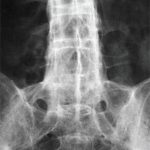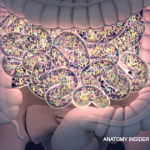To answer this, a second experiment was performed.5 Researchers gave the normal mice a combination of antibiotics to sterilize the bowel before they were transfected with the human HLA‑B27 antigen. And then the researchers waited. And nothing happened. They assessed the bowel, and there was no inflammation. They checked the skin and joints. Normal. It seems that in order to trigger widespread inflammation in HLA‑B27-positive mice, bacteria in the bowel are necessary to interact with the immune system.
But which bacteria? As long ago as 2002, I read with interest an article titled, “Klebsiella is the cause of ankylosing spondylitis.”6 After reading it, I was convinced that the authors had pinpointed the trigger for ankylosing spondylitis. To my chagrin, I flipped the page to the next article, titled, “Klebsiella is not the cause of ankylosing spondylitis.”7 In equally convincing terms, it refuted every argument that only minutes before had seemed irrefutable. So goes the search for truth.
In recent years, several studies have assessed whether altering the bacterial biome of the gut might lead to clinical improvement in AS. An open-label study that assessed the effect of treating AS patients with moxifloxin was published in 2007.8 This 12-week study of 76 patients demonstrated mild, statistically significant improvement in AS symptoms. But probiotics alone may not be the answer. A probiotic did not significantly benefit patients with ankylosing spondylitis compared with placebo in a controlled trial published in the Journal of Rheumatology in 2010.9
Hospital Visit
After hours, I stopped by to see Josh at Maine Medical Center. He was asleep after a chair shower, curled up on his side, his hair neatly combed, the T-shirt replaced by a hospital gown. An IV infusion of methylprednisolone sodium succinate was running in. Physical and occupational therapists had written their notes. Nursing had already called me regarding pain management. For the time being, Josh was receiving hydrocodone and indomethacin. I reviewed with his primary nurse the concept that Josh’s pain was different than, say, postoperative pain. Control of his inflammation should result in better control of his pain. We shouldn’t rely on narcotics.
“But he’s rating his pain as an 8 on a 1–10 scale,” she reminded me.
“I know, but let’s go easy on the narcotics.” She was not totally convinced.
I was already considering the next step, an infusion of infliximab, a TNF-alpha blocker. On his right forearm, nursing had already placed a PPD to ensure Josh had never been exposed to tuberculosis.
AS, unlike rheumatoid arthritis, undeniably goes back thousands of years & afflicts crocodiles, as well as humans.
Josh stirred. “I hated the idea of coming in the hospital, but this is okay. People here have been very nice.”



